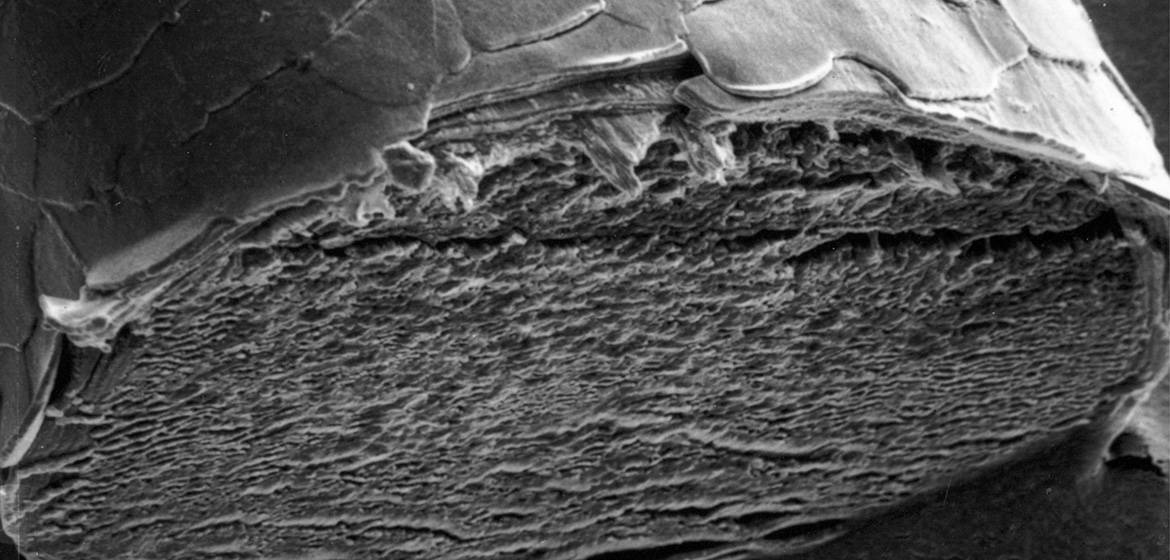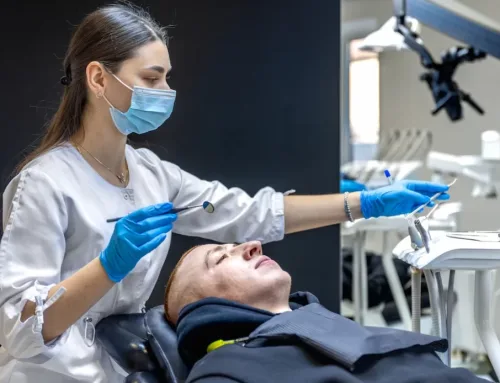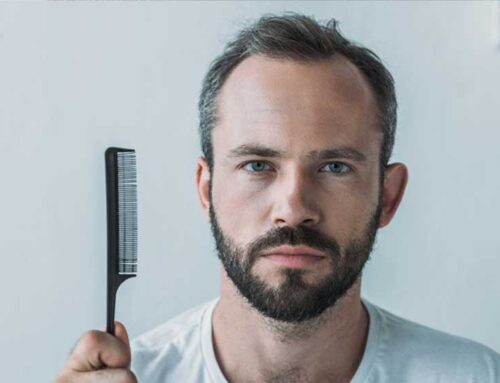Composition and Structure of Hair with Cyclic Growth Behavior
Structure of hair is much more complicated than it appears. It helps transmit sensory information. It acts as a barrier to foreign particles. It’s an important part of the appearance and creates gender identity. It’s also the only bodily structure that can completely renew itself without scarring. There is hair on almost every surface of the human body. Here’s a complete overview of its biology, structure, and function.
The improper use of tools, heat, excessive manipulation and chemical over-processing can cause damage to the cuticle layer of the hair, weakening the integrity of the hair. To prevent hair damage, take a proactive approach to healthy hair care by scheduling an appointment with a licensed stylist.
Structure of Hair
Hair is simple in structure, but has important functions in social functioning. Hair is made of a tough protein called keratin. A hair follicle anchors each hair into the skin. The hair bulb forms the base of the hair follicle. In the hair bulb, living cells divide and grow to build the hair shaft. Blood vessels nourish the cells in the hair bulb, and deliver hormones that modify hair growth and structure at different times of life.
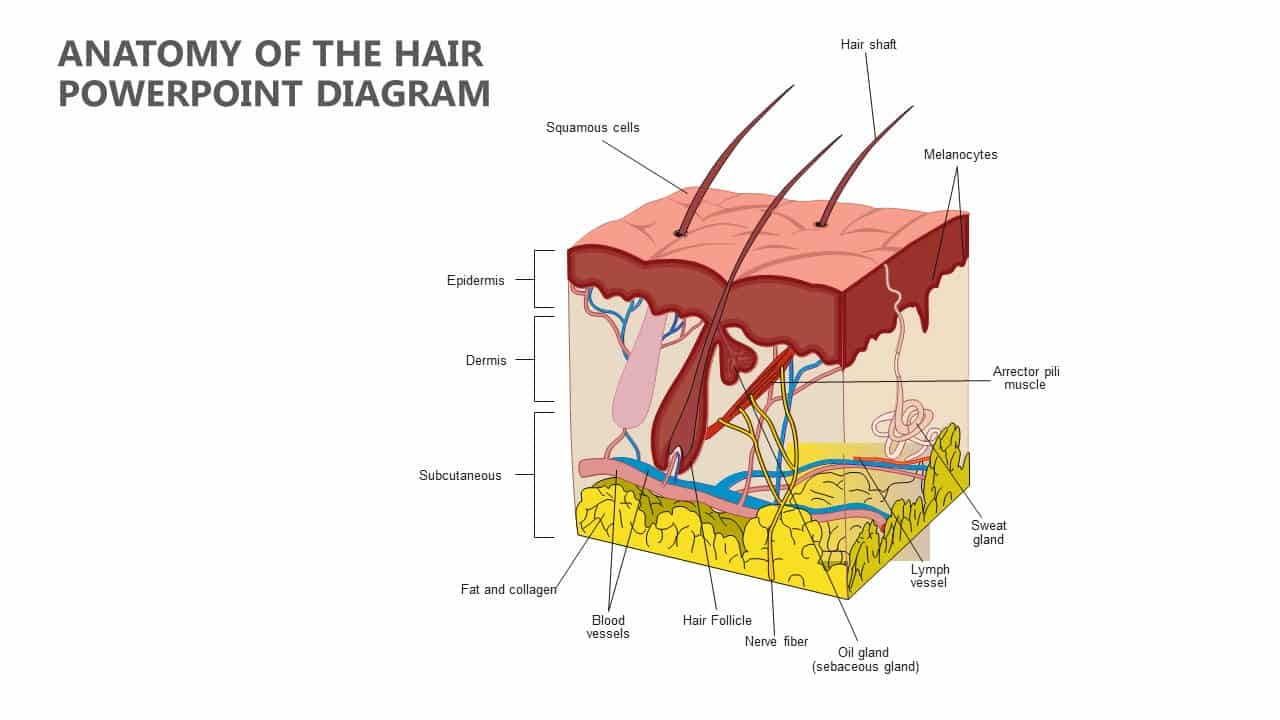
Formation of Hair
A developing fetus has all of its hair follicles formed by week 22. At this time, there are 5 million follicles on the body. One million of those are on the head and 100,000 are on the scalp. This is the largest number of hair follicles a human will ever have because follicles do not continue to grow during life. As we grow older, the density of hair follicles decreases.
1. Anatomy
A diagram of hair anatomy may look straightforward, but it’s actually one of the most complicated structures in the body. Structure of hair is made up of two separate sections: the hair follicle, which exists below the skin, and the hair shaft, which is the hair that we see.
2. Hair Follicle
The hair follicle is the living part of the hair. It’s a stocking-like structure that contains cells and connective tissue. The papilla exists at the base of the hair follicle. It contains tiny blood vessels (capillaries) that nourish the cells. The follicle also contains the germinal matrix, which is where cells produce new hairs.
The follicle is surrounded by an inner and outer sheath that protects and molds the growing hair shaft. The inner sheath follows the hair shaft and ends just before the opening of the sebaceous gland. The outer sheath continues all the way up to the sebaceous gland. The arrector pili muscle, a tiny bundle of muscle fiber, is attached to the outer sheath. When the muscle contracts, it causes the hair to stand up, otherwise known as goosebumps. The sebaceous gland produces sebum, or oil, which is the body’s natural conditioner. More sebum is produced during puberty, which is why acne is common during the teen years. Sebum production decreases with age, causing the skin to become dry.
3. Hair Shaft
Your hair shaft consists of three layers:
1. The Cuticle
The cuticle is your hair’s protective layer, composed of overlapping cells — like fish scales or roof tiles, but facing downwards. A healthy cuticle is smooth and flat. This gives your hair shine and protects the inner layers from damage. It also minimizes the movement of moisture in and out of the underlying cortex, thus maintaining your hair’s hydration balance and flexibility. However, chemical processes and weathering can lift the cuticle and disrupt this balance, causing your hair to become dry and brittle.
2. The Cortex
The cortex forms the main bulk and pigment (color) of your hair. It consists of long keratin filaments, which are held together by disulphide and hydrogen bonds. The health of your Corte depends largely on the integrity of the cuticle protecting it.
3. The Medulla
The medulla, only present in thicker hair types, is the innermost layer of your hair. It consists of a soft, thin core of transparent cells and air spaces.
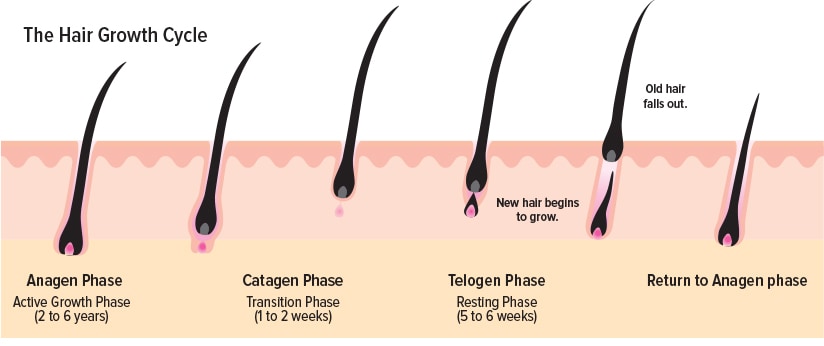
The Hair Growth Cyclic Process
The hair on the scalp grows about a half a millimeter a day—about 6 inches per year. Unlike in other mammals, hair growth and loss are random and not seasonal or cyclical. Hairs are always in various stages of growth and shed at any given time. There are three stages of hair growth: anagen, catagen, and telogen.
Stage1: The anagen phase is the active or growth phase of the hair. Most hair is constantly growing and spends three to four years in this stage. A new hair forms and pushes the club hair up and out of the follicle. During this phase, hair grows approximately 1 centimeter every 28 days. Some people have difficulty growing their hair beyond a certain length because they have a short anagen phase. Conversely, people who have very long hair and have no trouble growing hair have a long anagen phase. The anagen phase for eyelashes, eyebrows, and leg and arm hair is also very short—about 30 to 45 days—which explains why these hairs are so much shorter than scalp hair.
Stage 2: The catagen phase is a transitional stage, and 3% of all hairs are in this phase at any given time. It lasts for two to three weeks. During this time, growth slows down and the outer root sheath shrinks and attaches to the root of the hair, forming what is known as a club hair.
Stage 3: The telogen phase is the resting phase, which lasts for about three months and accounts for 10% to 15% of all hair. The hair follicle is at rest and the club hair completely formes.Pulling out a hair in this phase will reveal a solid, dry, white material at the root. The body sheds approximately 50 to 100 scalp hairs a day.
Conclusion:
Structure of hair depends on three stages which are dependent on each other. They vary across various age groups. The hair follicles are very strong yet they appear to be fragile especially when they are wet. Proper hair treatment should be carried for growth and protection.


